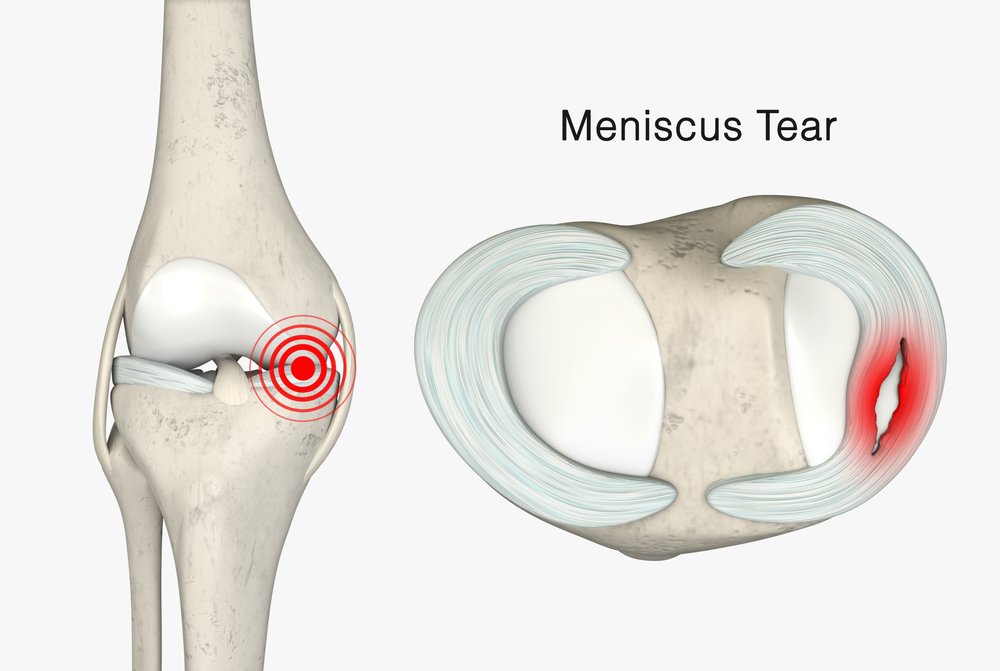
Meniscus Tears: Nonoperative and Operative Treatment
The meniscus is a C-shaped piece of cartilage that acts as a cushion between the thighbone (femur) and shinbone (tibia) in the knee joint. It helps to distribute weight evenly across the joint, absorb shock, and stabilize the knee.
A meniscus tear is a tear in one of the two menisci, medial or lateral. It is a common injury, especially in athletes and people who participate in activities that involve a lot of twisting or pivoting.
Meniscus tears can be classified as acute or degenerative. Acute tears are caused by a sudden twisting or pivoting motion of the knee, while degenerative tears are caused by wear and tear over time. Degenerative tears can act up acutely from simple activities like squatting down, getting out of a car, or pivoting on one leg.
Symptoms of a meniscus tear can include
- Pain in the knee
- Swelling in the knee
- Locking or catching of the knee
- Giving way of the knee
- Difficulty walking or bearing weight on the knee.
Dr. Prisk can diagnose a meniscus tear by performing a physical examination and in-office tests such as an X-ray and ultrasound. An MRI is warranted when a meniscus tear creates symptoms that are not manageable by therapy or injections.
The treatment for a meniscus tear depends on the severity of the tear and the patient's age, activity level, mechanical complaints, pain, and overall health.
Nonoperative treatment
Nonoperative treatment is the first line of treatment for most meniscus tears. It involves rest, ice, compression, and elevation (RICE), pain medication, physical therapy, and activity modification.
Rest: Avoiding activities that put stress on the knee, such as running, jumping, and pivoting, can help to reduce pain and swelling.
Ice: Applying ice to the knee for 20 minutes at a time, several times a day, can help to reduce pain and swelling.
Compression: Wrapping the knee with an elastic bandage can help to reduce swelling.
Elevation: Elevating the knee above the heart can also help to reduce swelling.
Pain medication: Over-the-counter pain relievers, such as ibuprofen or naproxen, can help to relieve pain. Use only with caution and if your primary care doctor feels it is safe for your stomach and kidneys. DO NOT USE IF ON BLOOD THINNERS or YOU THINK YOU MAY NEED SURGERY SOON. Tylenol, although less effective, may be an alternative. Topicals like Biofreeze can be tried.
Physical therapy: Physical therapy can help to improve range of motion, strength, and flexibility in the knee. Training the hips/gluteal muscles to protect the knee can be very effective.
Activity modification: Avoiding activities that put stress on the knee is important during the healing process.
Operative treatment
Operative treatment is recommended for patients who have not responded to nonoperative treatment or who have a large or complex tear. Particularly, patients that have treatment resistant locking, catching, or giving way symptoms, recurrent swelling, and pain. Degenerative tears may be early signs of needing a knee replacement.
There are 3 main types of operative treatment for meniscus tears:
- Meniscal repair: This involves sewing the torn meniscus back together.
- Meniscal transplantation: This involves replacing the torn meniscus with a piece of cartilage from a cadaver or a living donor.
- Partial or total meniscectomy: This is removing a portion of meniscus that is not salvageable and is causing mechanical complaints. Loss of meniscus means loss of cushioning and this is less than ideal, but often gives relief of pain in the short-term.
Meniscal repair is the preferred treatment for acute tears in younger patients. Meniscectomy is typically used for older patients or patients with degenerative or irreparable tears. Transplantation is reserved for very specific indications of a non-arthritic knee in a patient trying to avoid progression to a knee replacement for a prior massive irreparable meniscus.
The recovery time for meniscus repair or transplantation is typically can be up to 3 to 6 months. During the recovery period, patients will need to use crutches in the first 6 weeks and avoid activities that put stress on the knee. An arthroscopy and partial meniscectomy is a procedure you can walk right after.
Which treatment is right for you?
Please contact us at 412-525-7692 for an appointment with Dr. Prisk. We perform arthroscopies at UPMC East Hospital and AHN Monroeville Surgery Center.
